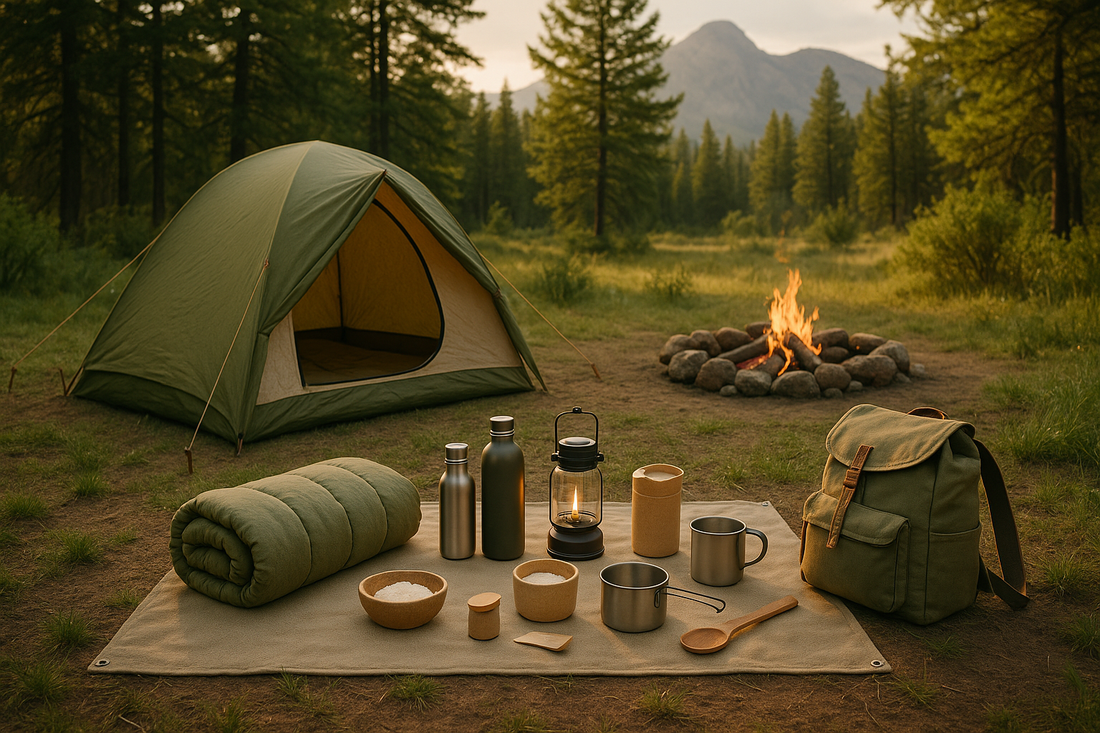
How to Camp Sustainably with Minimal Gear
Share
Camping is all about reconnecting with nature, but ironically, many campers unknowingly leave behind a heavy environmental footprint. From excess gear to single-use plastics, it’s easy to accumulate waste and impact the outdoors.
The good news? Minimalist camping and sustainability go hand in hand. With a thoughtful approach, you can pack less, reduce waste, and camp in a way that respects the environment.
Here’s how to camp sustainably with minimal gear.
🌱 1. Embrace the “Less is More” Mindset
Minimal gear camping means carefully choosing multi-purpose, durable items instead of packing everything “just in case.” The fewer items you bring, the less waste you produce and the easier it is to leave no trace.
👉 Ask yourself: Do I really need this, or can one item serve multiple purposes?
🎒 2. Pack Multi-Functional Gear
Opt for gear that serves more than one function:
-
A multi-tool instead of separate knives, pliers, and screwdrivers
-
A buff or bandana that works as a towel, head covering, or napkin
-
A lightweight tarp that doubles as a shelter, groundsheet, or rain cover
-
A solar-powered lantern that charges devices, too
This reduces the number of items you carry and cuts down on manufacturing and waste.
🥤 3. Ditch Single-Use Items
Single-use plastics and disposables create unnecessary trash in the wild. Instead, pack:
-
A reusable water bottle or hydration bladder
-
Collapsible silicone containers for food
-
Reusable utensils (bamboo, stainless steel, or titanium)
-
A lightweight camping stove to avoid disposable grill kits
Sustainable camping isn’t just about what you bring—it’s also about what you leave behind.
🔋 4. Choose Eco-Friendly Materials
Whenever possible, invest in gear made from sustainable or recycled materials:
-
Tents made with recycled polyester
-
Sleeping bags filled with synthetic or responsibly sourced down
-
Recycled aluminum cookware
Look for certifications like bluesign® or Fair Trade when buying new gear.
🍳 5. Simplify Your Meals
Minimalist, eco-friendly meal planning can save space and reduce waste:
-
Prep meals at home in reusable containers
-
Choose dry foods like oats, rice, and lentils that are lightweight and packable
-
Use refillable spice containers instead of single-use packets
-
Practice “pack it in, pack it out” — everything you bring, take it back
🔥 6. Respect Leave No Trace Principles
The heart of sustainable camping is minimizing your impact:
-
Camp on durable surfaces
-
Keep fires small or use a stove
-
Leave natural objects (rocks, plants, wood) where they are
-
Dispose of waste properly — or even better, carry it out
🚶 7. Travel Light, Travel Green
The less gear you bring, the easier it is to hike, bike, or use public transport to reach your campsite. Lowering your reliance on cars and RVs reduces emissions and keeps your trip aligned with sustainable practices.
🌍 Final Thoughts
Camping sustainably with minimal gear isn’t about sacrifice — it’s about freedom. You carry less, waste less, and connect more deeply with nature. By choosing multi-purpose, durable, and eco-friendly gear, you can enjoy the outdoors responsibly and leave the wilderness as pristine as you found it.
👉 Next time you plan a trip, challenge yourself: What can I leave behind? Chances are, you won’t miss it.
🔑 Quick FAQ
Q: Is minimalist camping only for experienced campers?
Not at all! Beginners can start small by reducing gear and focusing on essentials.
Q: How do I know what gear I really need?
Test your setup on a short overnight trip. Anything you don’t use, leave at home next time.
Q: Can camping really be sustainable?
Yes — when you use eco-friendly gear, minimize waste, and follow Leave No Trace principles.
